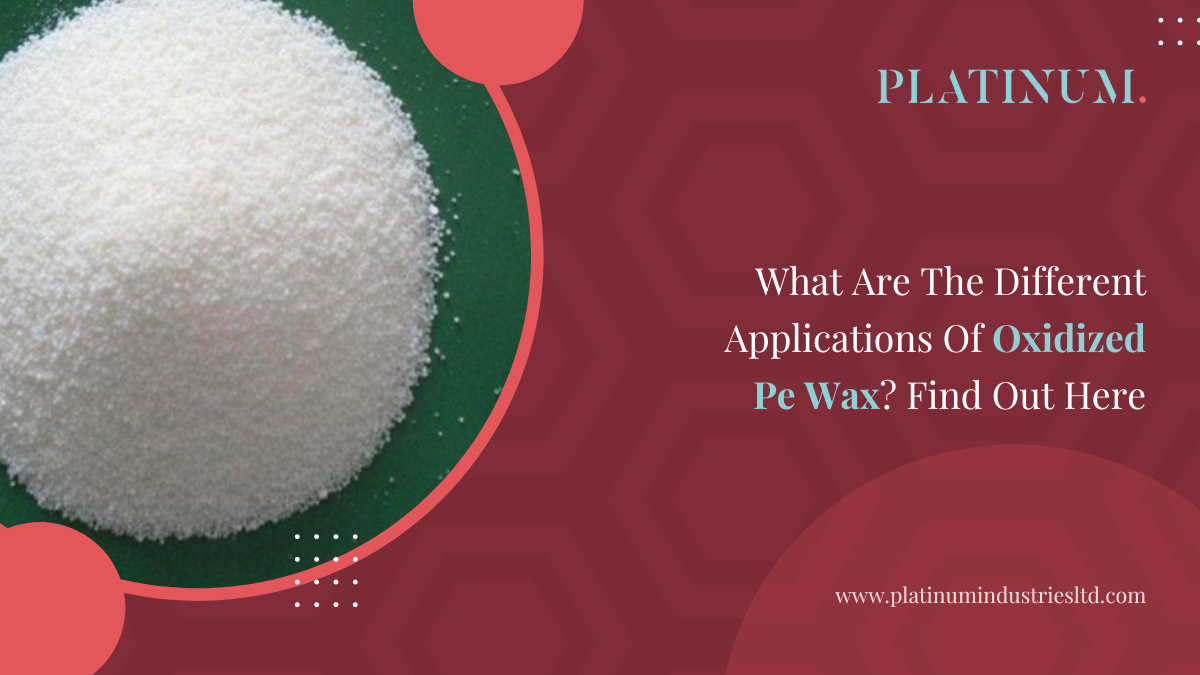Polyethylene (PE) wax is a versatile material known for its applications in various industries. However, when subjected to an oxidation process, the properties of PE wax are enhanced, resulting in a valuable product called oxidized PE wax. In this blog, we will delve into the world of oxidized PE wax and discover its diverse range of applications across different sectors.
1. Coatings and Inks:
Oxidized PE wax finds extensive use in the coatings and ink industry. Due to its excellent dispersibility and compatibility with other materials, it is commonly employed as a dispersing agent, matting agent, and surface modifier in coatings and ink formulations. The wax’s ability to improve scratch resistance, gloss, and anti-blocking properties makes it an essential ingredient in these applications.
2. PVC Stabilization:
In the manufacturing of polyvinyl chloride (PVC) products, oxidized PE wax plays a crucial role as an external lubricant and processing aid. It helps improve the flow properties of PVC compounds, reducing processing difficulties and enhancing the final product’s surface finish. Additionally, it acts as a heat stabilizer for PVC, improving the material’s resistance to thermal degradation during processing.
3. Textile and Leather Processing:
Oxidized PE wax finds applications in the textile and leather industries as a softening agent and lubricant. In textile processing, it imparts a smooth, soft feel to fabrics and enhances their dye receptivity. In leather processing, the wax aids in achieving uniform colour distribution and improved water repellency in leather products.
4. Adhesives and Sealants:
The addition of oxidized PE wax to adhesives and sealants can improve their performance in various ways. It acts as a flow and rheology modifier, reducing viscosity and enhancing workability during application. Additionally, it helps enhance the adhesion and wetting properties of adhesives and sealants, resulting in stronger and more durable bonds.
5. Masterbatches and Compounds:
Oxidized PE wax is often used as a processing aid in the production of masterbatches and compounds. It improves the dispersion of pigments, fillers, and additives in the polymer matrix, leading to more uniform and consistent final products. Furthermore, the wax’s lubricating properties facilitate better melt flow, reducing energy consumption during processing.
6. Rubber and Tire Industry:
In the rubber and tire industry, oxidized PE wax is employed as a lubricant and processing aid during the compounding and shaping processes. It helps prevent the sticking of rubber compounds to processing equipment, resulting in smoother and more efficient production. Additionally, the wax contributes to the enhancement of the finished rubber product’s surface properties.
Oxidized PE wax proves to be a true chameleon in the world of industrial applications, with its versatility and adaptability to various industries. Connect with us at Platinum Industries, the best oxidized pe wax manufacturer to know how we can help your industrial and manufacturing business grow by providing you with the best quality Oxidized PE wax.
ALSO, YOU CAN READ OUR NEW UPDATES
- 5 Reasons Why You Should Switch To The Organic-Based Stabilizers
- What is Zinc Stearate? Learn About its Applications Here
- How To Choose Cpvc Additives? Here Are The Tips To Keep In Mind
- How do PVC Stabilizers Differ from CPVC Stabilizers? Check out 5 key Differences
- 5 Applications of Calcium Zinc Stabilizer That You Should Know of
- Looking to procure pe wax? Here are the properties you should look for
- 5 applications of cpvc additives that you must know about
- 5 reasons why pvc superpacks are in great demand
- Unlocking the versatility of zinc stearate: exploring its wide range of applications
- Calcium zinc stabilizer: what are its properties and advantages?
- Looking to buy pvc one pack stabiliser? Avoid making these mistakes
- A comprehensive guide on magnesium stearate: learn about its significance and applications
- Check out this guide on 6 pvc stabilizer applications that you didn’t know about
- Calcium stearates: what are the different types and applications?
- What are the advantages and applications of cpvc compounds?

